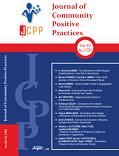OVERCOMING DRAWBACKS OF HIERARCHY: EXAMPLES FROM KIBBUTZ COMMUNITIES
OVERCOMING DRAWBACKS OF HIERARCHY: EXAMPLES FROM KIBBUTZ COMMUNITIES
Author(s): Uriel LeviatanSubject(s): Social Sciences
Published by: Asociatia pentru Dezvoltare si promovare socio-economica Catalactica
Keywords: Kibbutz; hierarchy; ill-effects of hierarchy; managerial rotation; direct democracy
Summary/Abstract: While hierarchical structures have many advantages for the effective running of organizations, they also pose major drawbacks both for organizations and for individuals lower in a hierarchy. Research in kibbutz industry and in its social organizations shows that kibbutzim are not much different from other organizations because within kibbutzim hierarchical structures are common, differentials in power and control are correlated with hierarchical position, differential rewards are correlated with position, and health symptoms and indicators for well being are correlated with hierarchical position. Yet kibbutzim managed to solve the paradox of having organizations that are hierarchically structured and show all the features of hierarchical organizations yet keep up with the principles of equality and democracy. I explain and describe seven different counterbalancing mechanisms employed by kibbutzim to alleviate the drawbacks of hierarchy and yet preserve its advantages. Recently, many kibbutzim went through major structural transformations, and most mechanisms to counterbalance the ill effects of hierarchy were among the "victims" of these structural changes. Results of research show both in the economic sphere and in the social sphere how giving up on the counterbalancing mechanisms brings about deterioration in positive outcomes. The last part of the paper discusses reasons for the deterioration in effectiveness and then discusses possible generalization from kibbutz research to other societies.
Journal: Jurnalul Practicilor Comunitare Pozitive
- Issue Year: XIII/2013
- Issue No: 1
- Page Range: 147-164
- Page Count: 18
- Language: English

